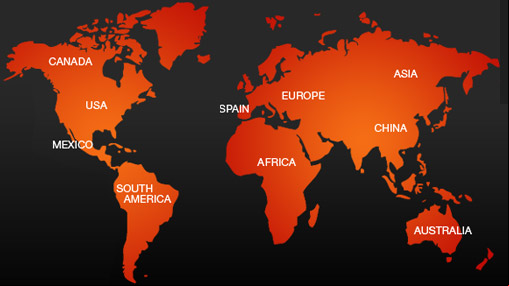- Home About RM Minerals
- Virtual Photo Museum Blog RM
- Microscopy and instruments How to Buy Disclaimer
Copyright 2010-2025
rosellminerals.informativomineiro.com



Very aesthetic aggregates of epidote crystals forming beams, with brilliance, defined and with a classic green color. They are arranged in groups and in an isolated way on the matrix with quartz crystals, on which they stand out. 5lr20
Very aesthetic aggregates of epidote crystals forming beams, with brilliance, defined and with this classic green color. They are disposed on the matrix with quartz crystals, forming very interesting concentric growths.
These baryte crystals are very different from the usual ones that we can see coming from this Moroccan locality and even from other deposits famous for baryte. These are prisms of different orders, the predominant third order, truncated by the second order. We observe that a white geometric growth has formed and only affects certain faces of the rhombic prisms. This zoning is unusual for the species. The crystals are transparent and brilliant.
These baryte crystals are very different from the usual ones that we can see coming from this Moroccan locality and even from other deposits famous for baryte. These are prisms of different orders, the predominant third order, truncated by the second order. We observe that a white geometric growth has formed and only affects certain faces of the rhombic prisms. This zoning is unusual for the species. The crystals are transparent and brilliant.
Very rich chabazite-Ca specimen, with defined and brilliant crystals, those cover one side of the matrix, while on the other we can see numerous heulandite crystals with groups of chabazite-Ca in the upper part. This specimen belongs from the Faroe Islands (Færøerne, which means "islands of lambs"), an autonomous territory of the Kingdom of Denmark, made up of a small archipelago in the North Atlantic, between the United Kingdom, Norway and Iceland. It is not easy to find zeolites from this area.
Group of cubic to prismatic fluorite crystals, translucent, with a color between violet to purple depending on the incident light. A good size specimen with a matrix on the back. From this classic Moroccan mine.
Divergent aggregates of good sized acicular to prismatic goethite crystals. They are accompanied by black globular aggregates that, once analyzed, have turned out to be a first generation of goethite. It is accompanied by small aggregates of green conichalcite crusts, also analyzed. The specimen shows a fissure that has been consolidated, without affecting its stability and aesthetics.
These specimens show us a chalcopyrite matrix partially transformed into irisdecent covellite-bornite and goethite. In the cavities there are numerous aggregates of prismatic malachite crystals, of an intense green, with transparency and brilliance. If we observe them with the magnifying glass we can see that they are faceted crystals. A novelty in the Bleida mines area.
These specimens show us a chalcopyrite matrix partially transformed into irisdecent covellite-bornite and goethite. In the cavities there are numerous aggregates of prismatic malachite crystals, of an intense green, with transparency and brilliance. If we observe them with the magnifying glass we can see that they are faceted crystals. A novelty in the Bleida mines area.
These specimens show us a chalcopyrite matrix partially transformed into covellite-bornite and goethite. In the cavities there are numerous aggregates of prismatic malachite crystals, of an intense green, with transparency and brilliance. If we observe them with the magnifying glass we can see that they are faceted crystals. A novelty in the Bleida mines area.
A novelty from the Bleida mines. Groups of malachite crystals, prismatic to needle like, forming velvety aggregates with intense brilliance and color. They are disposed in the cavities of a quartz and dolomite matrix, with cuprite.
From a classic German locality: Alberoda bei Aue. This locality is known by its silver sulphosalts, but not well represented in collections. This good sized specimen is very rich in brilliant stephanite crystals and some reddish pyrargyrite.
Group of prase quartz crystals, with good luster, very well defined and contrasting on a matrix covered by andradite crystals. A very aesthetic piece.
Doubly terminated crystal of prase quartz, with a very good size. It shows an intense green color and polycrystalline growths on the faces of the prism. Very aerial and esthetic specimen on a matrix rich in small andradite crystals and green hedenbergite needles. A very aesthetic piece.
Doubly terminated smoky quartz crystal, very well defined, brilliant and transparent. It is disposed on a matrix with adularia crystals.
These pyrite specimens from this Bulgarian mining area are very aesthetic, highlighting the complex forms and penetration twins they present. Good luster and color. They are accompanied by crystals of quartz, sphalerite and brilliant chalcopyrite on the matrix. It comes from a mining area known as the Septemvri mine, which includes the following deposits: Sharenka, Baram, Mogilata, Osikovo and Pechinsko.
These pyrite specimens from this Bulgarian mining area are very aesthetic, highlighting the complex forms. Good luster and color. They are accompanied by crystals of quartz, sphalerite and brilliant chalcopyrite on the matrix. It comes from a mining area known as the Septemvri mine, which includes the following deposits: Sharenka, Baram, Mogilata, Osikovo and Pechinsko.
These pyrite specimens from this Bulgarian mining area are very aesthetic, highlighting the complex forms and penetration twins they present. Good luster and color. They are accompanied by crystals of quartz, sphalerite and brilliant chalcopyrite on the matrix. It comes from a mining area known as the Septemvri mine, which includes the following deposits: Sharenka, Baram, Mogilata, Osikovo and Pechinsko.
Group of smoky quartz crystals of a very good size, complete, doubly terminated and with parallel growth. With transparence and brilliance and a uniform smoky tone. It comes from this classic Swiss locality.
Very good specimen of epidote from this classic Alpine Italian locality. Several epidote crystals with a yellowish green color, with transparence and very well defined. They are accompanied by numerous prismatic crystals of diopside, also very well defined, with transparence, brilliance and a very characteristic olive green color. Good size and quality specimen for display. It belongs from the former collection of Ezio and Manuela Bernabé, with the typewritten label, we will send with the piece.
Hambergite is a rare mineral species, a beryllium hydroxyborate, which occurs in the tourmaline pegmatites of Anjanabonoina. This sample shows us a group of crystals of exceptional size and quality, flattened and with well-defined terminations. Transparent to translucent, with brilliance. This mineral is usually found as single crystals, rarely on matrix, and less with this size. A museum piece.
Exceptional very good sized specimen of humite, a rare magnesium fluorosilicate, from the type locality for the species: Monte Somma. In the piece we can see numerous crystals of an orange tone, defined and some with rounded shapes, brilliant and with transparence. They are accompanied by micaceous phlogopite crystals and white aggregates of sodalite.
Humite is a species closely related to norbergite, chondrodite and clinohumite. These minerals are very difficult to distinguish. Humite appears to have a smaller field of stability than clinohumite, chondrodite and norbergite. Humite is often associated with one or more of the other species of the humite group, as intergrowths.
Exceptional specimen of kolwezite, which occurs as globular aggregates of olive-green crystals, partially covered by a yellowish earthy patina. They are disposed on a matrix of pink crystals of cobaltoan calcite. An exceptional sample for the species. We have analyzed it to check the content of Co. The average of various analyzes indicates a Co: Cu ratio of 1: 2.3-2.6, consistent with some results from other specimens with 1: 2 ratios. Various black aggregates appear in the sample, sometimes partially covering kolwezite, which corresponds to heterogenite. Also with small malachite crystals.
A novelty from the Bleida mines. Groups of malachite crystals, prismatic to needle like, forming velvety aggregates with intense brilliance and color. They are disposed in the cavities of a quartz and dolomite matrix, with chalcopyrite and bornite.
